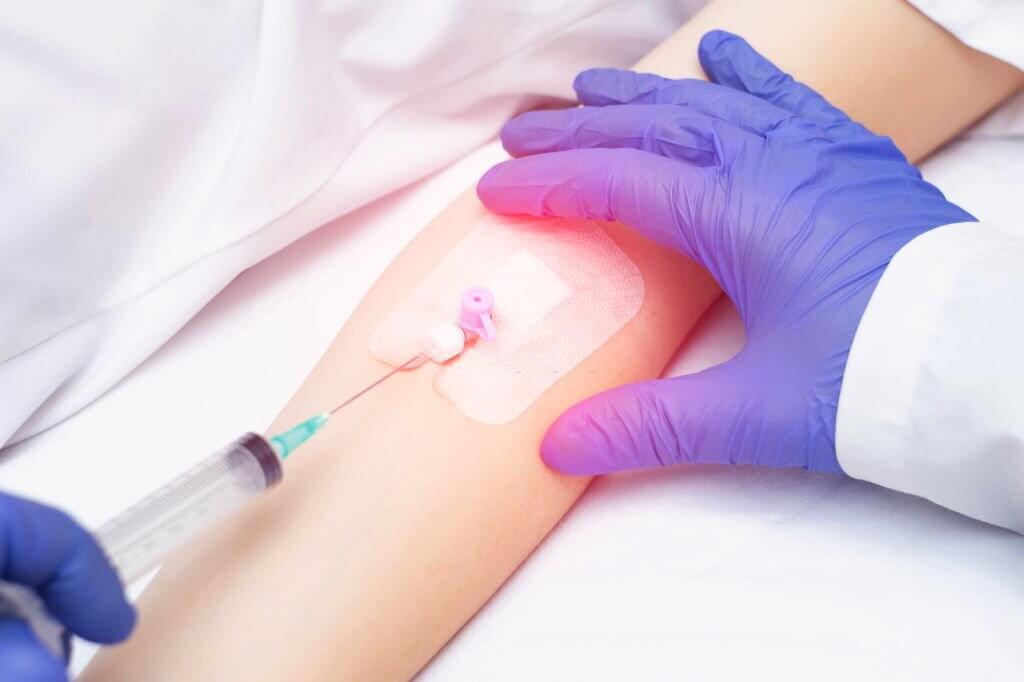Why is CHG Solution Better Than Iodine For Reducing CRBSIs?

Central venous catheters are medical devices extensively used in hospitals, especially in intensive care units. However, their use is also associated with higher risk of infections, most importantly central line-associated bloodstream infections (CRBSIs). Such infections can greatly jeopardize patients’ health, increase mortality risk, and raise medical costs. With growing antimicrobial resistance, preventing these infections has become increasingly important.
Using CHG solution containing antiseptic agents to prepare patients’ skin at the catheter insertion site has been proven effective to reduce CRBSIs. CHG stands for chlorhexidine gluconate, a broad-spectrum antiseptic disinfectant. It can kill gram-positive bacteria, gram-negative bacteria, viruses, and fungi, displaying broad antimicrobial properties. Studies show using 2% CHG solution for skin antisepsis is better than using iodine or other disinfectants in preventing CRBSIs.
CHG solution has several mechanisms of action in killing microbes. Firstly, it quickly disrupts bacterial cell walls, causing the bacteria to lose selective permeability and eventually die from leaking cellular contents. Secondly, it interacts with mitochondria in bacterial cells to disrupt oxidative phosphorylation and inhibit bacterial metabolism. Lastly, it also interacts with bacterial DNA to inhibit RNA synthesis.
Major benefits of using CHG solution include:
-
1. Broad-spectrum antimicrobial activity: CHG has bactericidal and fungicidal effects against many pathogens, reducing contamination from various microbes.
-
2. Persistent antimicrobial effect: CHG solution has residual effects that persist for hours after skin application. This allows sustained antimicrobial effect during catheter insertion.
-
3. Reduced biofilm formation: CHG inhibits pathogen growth, colonization and biofilm formation, lowering bacterial load and reducing biofilm on catheter surfaces.
-
4. High safety profile: When used appropriately, CHG has low skin irritation and low risk of allergic reactions. But contact with eyes, ears and other areas should be avoided.
-
5. Easy to use: CHG solution doesn’t require rinse-off and is simple to use, improving compliance among healthcare workers.
Studies show using 2% CHG solution can reduce CRBSIs by over 50% compared to iodine. Using CHG also avoids risks associated with long-term high-dose iodine use like thyroid dysfunction. In addition, CHG solution is inexpensive with lower cost than iodine.
However, some limitations exist with CHG solution:
-
1. May be corrosive to some plastics: CHG can deteriorate materials like nylon and silicone rubbers, so contact should be avoided.
-
2. Repeated use may lead to resistance: Prolonged repeated use of CHG may lead to bacterial tolerance, though clinical reports are still rare.
-
3. Requires standardized protocol: To maximize effects, standardized skin prep protocols are needed regarding application method, coverage and duration.
-
4. Safety in neonates uncertain: Safety and efficacy of CHG in neonates requires further research due to their distinct skin properties and absorptivity.
In summary, compared to iodine, using CHG solution for skin antisepsis before adult central line insertion is safer, easier to use, more cost-effective, and significantly reduces CRBSIs. But its limitations should also be noted and improper use decreases its effects. Hospitals should evaluate CHG’s value in CRBSI prevention based on their own characteristics.
Click to View: Mantacc CHG applicators
References
-
Guidelines for the Prevention of Intravascular Catheter-Related Infections
Related Posts
Everything You Need To Know About CHG Swabsticks
Ethanol vs Isopropyl Alcohol: Which Works Better With CHG Applicator For Skin Preparation?
The CHG Applicator: Championing Effective Skin Preparation
A Complete Guide to Proper Surgical Skin Prep Technique









